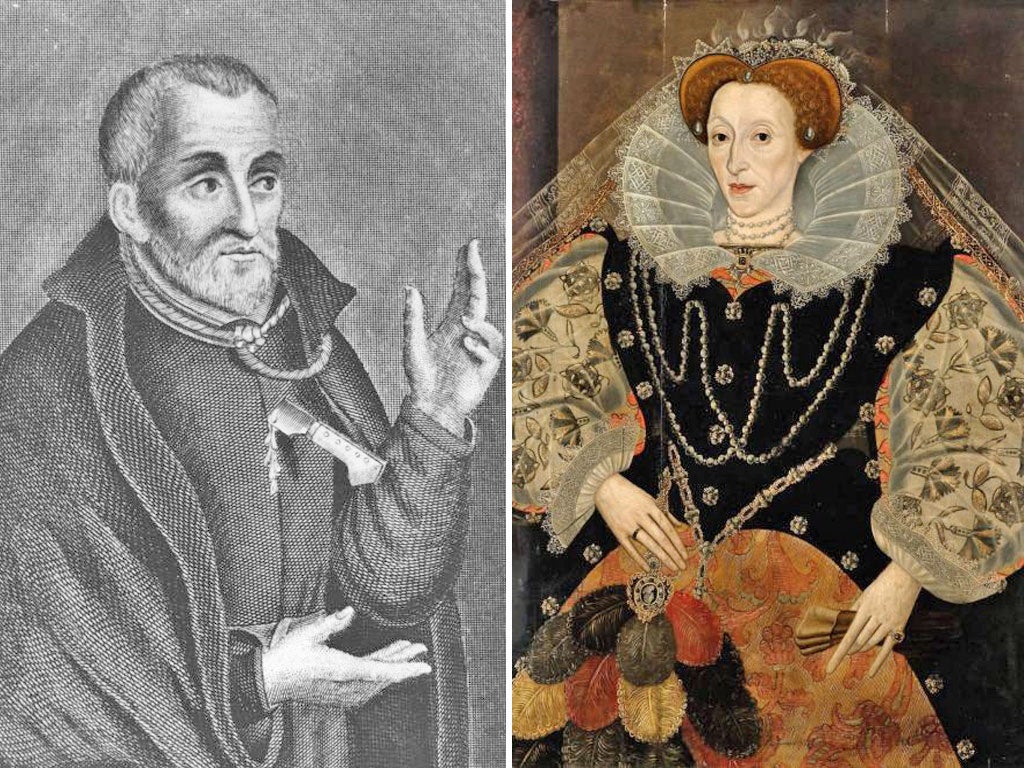Elizabethan state 'doctored evidence of priest's treason'

Your support helps us to tell the story
From reproductive rights to climate change to Big Tech, The Independent is on the ground when the story is developing. Whether it's investigating the financials of Elon Musk's pro-Trump PAC or producing our latest documentary, 'The A Word', which shines a light on the American women fighting for reproductive rights, we know how important it is to parse out the facts from the messaging.
At such a critical moment in US history, we need reporters on the ground. Your donation allows us to keep sending journalists to speak to both sides of the story.
The Independent is trusted by Americans across the entire political spectrum. And unlike many other quality news outlets, we choose not to lock Americans out of our reporting and analysis with paywalls. We believe quality journalism should be available to everyone, paid for by those who can afford it.
Your support makes all the difference.Queen Elizabeth I's government was so determined to convict the English Jesuit priest Edmund Campion of treason that it doctored one of the key documents used to prosecute and send him to his execution, according to new research.
The historian Stephen Alford has discovered that incriminating evidence was inserted into the document.
At a time when Catholics in Protestant England were risking imprisonment or death if caught, Campion's name was added to suggest that he headed a list of hundreds of English émigré priests accused of conspiring in Rome to overthrow the English monarchy.
"Elizabeth's government needed Campion's conviction for treason. Their evidence, frankly, was thin. As thin as it may appear today… [the] dossier with Campion's name was the best physical evidence they had," said Professor Alford.
The discovery throws dramatic new light on the trial of a priest who preached at secret Catholic meetings across England and published a pamphlet on Catholicism, but whose mission was pastoral not political.
For his religious beliefs, he was hanged, drawn and quartered in 1581. He was tied to a wicker hurdle that was dragged by horses along the roads near St Paul's Cathedral, through Holborn, along Oxford Street and to the place of execution. At Tyburn, he and two other priests were hanged and then, while barely still alive, cut down from the gallows. Professor Alford said: "While each man was still just alive, he was cut open, and his genitals and bowels, removed by the public hangman, were burnt before him."
He told The Independent that a 1960s printed version of the text had overlooked the doctoring and its significance: "It's pretty clear that it was altered in some way."
Professor Alford, head of early modern British history at the University of Leeds and former senior lecturer at Cambridge University, said: "Campion became a potent symbol for Elizabethan Catholics of the battle for true faith in the face of heretical, Protestant persecution, and for Elizabeth I's government a politically seditious priest who had to be seen to be guilty of treason against the queen – sound prosecution, not religious persecution. Hence the decision of Elizabeth's law officers to claim that he was involved abroad in plans for the invasions of Elizabeth's kingdoms."
Penguin will publish his research in The Watchers: A Secret History of the Reign of Elizabeth I on 30 August.
His research for the book involved poring over thousands of documents, teasing out the stories of dozens of lesser-known Elizabethans – mysterious characters who played a part in espionage and the ruthless pursuit of power politics. "It takes a keen eye to spot the adjustments: they are small, but their implications are profound," Professor Alford said.
The historian Dr John Cooper, author of The Queen's Agent: Francis Walsingham at the Court of Elizabeth I, said: “Interesting. Campion’s name does seem to have been added to this document, perhaps even by Walsingham himself - the style of the writing looks similar to his.”
He added: “16-century standards of what we would regard as proof and falsification are subtly different from our understanding of it. To our eyes, that looks like rank forgery. To 16-century eyes, altering a document to reflect what you know to be true as it were would have been regarded as a more acceptable practice.”
Join our commenting forum
Join thought-provoking conversations, follow other Independent readers and see their replies
Comments